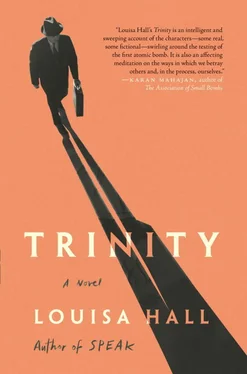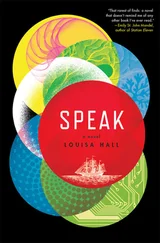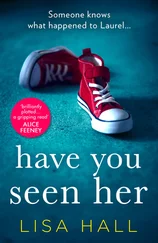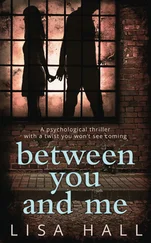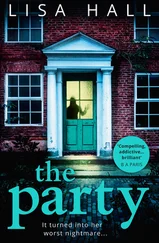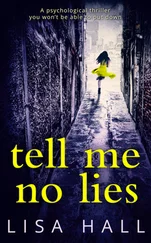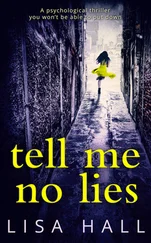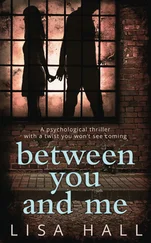It seemed to indicate that he was unable to answer. But it was he, after all, or so I told myself, who had initiated this new story in which we were now living. Shouldn’t he, therefore, be capable of clarifying the logic by which it functioned?
I expected him to have a method, a strategy planned in advance, some way of guiding this new, sickening story toward resolution.
So I continued to interrogate, but the more evidence I compiled, the more holes I discovered in the case I was building. Or perhaps I should say that with each newly acquired piece of evidence, new questions came up. And by the time July had bled into August, the case had expanded.
By then, I wasn’t only interested in what was true and what wasn’t, or what my husband did and didn’t do in Chicago. I was also interested in what he’d been feeling while he was acting: his intentions, his desires, the degrees of pleasure and shame he’d experienced concomitant with the crime that he was committing.
NOW, LOOKING BACK, MY INVESTMENT IN UNDERSTANDING EVERYaspect of his state of mind seems ill founded.
But, then again, the questions I was asking myself were the same questions that are asked every day in murder trials, which don’t only involve litigating whether or not a murder was done, but also whether the murderer was sane when he did it, whether he imagined the crime in advance, whether, while performing the crime, he felt pleasure, or whether he was plagued with remorse even as he pulled the knife out of his victim.
It’s never enough, for any of us, simply to know that a murder occurred. We always want to know why it was committed.
If we want to condemn the person who committed the murder, we want to know that he’s different from us: a person capable of committing a murder.
If we want to forgive him, we want to know that his feelings ran the same gamut as ours, and that he experienced the same horror and remorse we’d have felt in the same situation. We want to know that the action of murdering gave him no pleasure, and that we and the murderer, therefore, both exist on the same acceptable emotional spectrum.
That summer, before our child turned one, I desperately wanted to forgive my husband. How could I build a life with a man I didn’t forgive? How could I raise a child alongside him?
I wanted to forgive him, quickly and efficiently, because I felt my son and I could no longer continue in a world made so turbulent by my own confusion. As a result, I believed, I needed to experience what he felt when he went to Chicago. I needed to walk in his shoes, to go with him when he went to visit that woman.
How else, I thought, could I reliably understand, and therefore forgive, what he had chosen to do when he saw her?
But how could I feel, from the impossible distance of Austin a year after the fact, the exact pitch of excitement he felt when he waited behind her, while she unlocked the door to her apartment?
Or whether, rather than feeling excitement, he in fact felt a moment’s compunction, a fleeting desire to escape the web he himself had been weaving?
I tried to picture the front door of her apartment. I tried to hear the sound of her self-conscious laughter when she fumbled with the key in the lock.
Standing behind her, did he notice the trouble she had? Did he realize she was nervous? And did it make him feel slightly triumphant, or did he reach out to reassure her? Did he touch her elbow? Did he smile gently?
And, once she did finally succeed in opening the door, when they entered the darkened living room, did he immediately move to undress her, as he often immediately moved to undress me when I walked over the threshold into our house? Or did he give her time to turn on the light before he leaned forward to kiss her?
Closing my eyes, I tried to feel his first kiss. On her cheek, perhaps. Or perhaps on her lips. I tried to feel his hand on the small of her back, moving upward, lifting her sweater. But even then, even if I did feel his hand on her back, the picture remained incomplete, because, from that moment on, there were so many other possible moments, and each of those branched into so many other possible moments, until the options were countless.
Did he guide her immediately to the bedroom, or did they sit for some time, talking, in her living room? And where in her living room did they sit? It was important to me, in those days, to picture that room. Was it a separate room, or did she live in a studio, and was it only a portion of the room set off from the bedroom?
An enclosure, perhaps, with a TV and a couch. A couch, perhaps, where before she met my husband, she spent too many evenings alone, eating dinner by herself after work, wishing for the right man to come join her.
And even if the room could be settled, there were so many other possible choices. Did they drink wine, for instance, or did they drink beer? And did they sit close on the couch, with their knees lightly touching, or, tempting her to move forward, did he leave a small space open between them?
I tried to see what he saw from where he sat on the couch. I tried to feel the touch of her hand on my knee. I tried to feel the wool of her sweater. Perhaps it’s insanity that I’m describing. Maybe it’s empathy, Einfühlung, feeling into a person’s muscles and nerves: his skin when her nails traced his bare shoulder, her neck when he leaned forward and kissed it.
Perhaps. But more likely it was insanity. A sane person knows that you never know.
You never know, absolutely, what another person was feeling, just as we never know the velocity and the position of a particle at any one moment, all knowledge being by nature incomplete, all studies missing an aspect at least of the object they study.
And that was the worst part of those months: that it should have become my job in our marriage to picture a scene that I couldn’t picture, a scene that only my husband could help me piece back together, but that he found himself incapable of describing, his own mind having become oddly foggy, so that he responded to my questions with the same stunned and incapable blankness, that weird dog’s expression, that sometimes made me trust him more and sometimes made me trust him less, but always placed the full burden on me alone—then and later, while filling the gas tank, or mopping the soggy cereal at the foot of the high chair—to reconstruct a scene I was incapable of reconstructing, even as I continued to try, so that no matter how often I thought it over, no matter how often I closed my eyes and tried to feel what he’d been feeling, I couldn’t ever know fully whether he’d thought of our son when he lifted that woman’s sweater over her head, whether he’d thought of me when he drew her skirt up to her waist, whether he’d only thought of the woman before him, or whether he’d only thought of himself when he pulled her underwear down and pushed himself inside her.
So that was the worst part. Knowing, as I knew, even while I couldn’t stop trying, that I had no way of reliably reconstructing the entirety of that moment in Chicago, or any of the other moments leading up to it and in its wake, my uncertainty stretching from that point outward to every other moment my husband spent in cities other than Austin, and equally to every moment in our life together, in the uncertain and therefore unreliable existence we’d built for ourselves and for our child to dwell in.
I REALIZE I’M DRAMATIZING THIS INCIDENT SOMEWHAT. I KNOW Isound hysterical. I’ve conflated concepts like unkindness and cruelty, violence and deceit.
But murder isn’t infidelity. Lying is not the same thing as knifing a person you love in the gut, much less dropping a bomb on a city.
As a writer, particularly, I have always imagined that detail and precision are important, so this blurring of lines makes me wary. After all, wasn’t it my initial mistake to focus too hard on the feint of my husband’s brutality—that gun in the drawer, the knife in his pocket—and therefore fail to detect that the real danger was different?
Читать дальше
